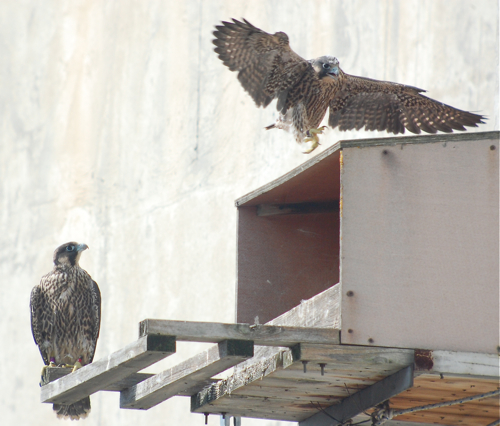Bird News: Response from Vermillion County, Indiana on why they gave such a low fine for killing an endangered species--essentially killing a bird like that is only a misdemeanor and though a Whooping Crane is valued at over $100,00--who would they pay that too? AKA the Hoosier State Law doesn't care about wildlife and Indiana doing a great job of advertising how much they don't want wildlife tourism money.
Let the Governor Mitch Daniels know that this makes you not want to spend any money in his state on tourism and copy Visit Indiana (tourism department) too. Keep the message respectful, don't call names but just say plainly and clearly something to the effect of:
Dear Governor Daniels,
I spend X amount of $ on birding/wildlife observation /hunting/fishing. Your state's treatment to kids and adults who shoot an endangered species on purpose makes me not want to visit your state or spend any money there. It's a bummer too because I would spend lots of money to see a wild whooping crane as well as many other birds.
It may not seem much, but it's a start to let Indiana know that the way they treat wildlife--especially an endangered species shared by many states, needs to change. Again, don't use profanity...although, feel free to listen to a certain Cee Lo song while you write your letter.
In other news, here's an interesting report on how birds with different colors survived after the Chernobyl disaster.
Danger of live cams, sometimes the birds die. Female eagle on Virginia Eagle Cam killed by plane, eaglets removed from nest.
Live Loon Cam is back on KARE 11
Bird Blogs:
This was more among the birding social media but Picus Blog posted photos to his Facebook page of a white-faced ibis in Massachussettes. They shouldn't be in that part of the US. Alas, some college students went out to watch the stake out birds and...videoed a peregrine falcon taking out the off course bird. MUST WATCH footage (if for no other reaction than the audio reaction of the birders):
[youtube]http://www.youtube.com/watch?v=eyqijh2sMao[/youtube]
Bird Event:
Delaware Bird-a-thon. 98% of all proceeds will go directly toward purchasing and enhancing land in Delaware. This land can provide vital migratory habitat for species such as the Red Knot. If you pledge you get a red know bracelet.

 As part of my duties as a park ranger, we go out and rove in the park. Basically, we tote around a back pack with park info and you're on hand to answer questions--it's fun, it's a bit like improv. I like to take my scope for birding of course, but it gives me a chance to explore more areas of the park that I otherwise wouldn't visit. One is Lock and Dam 1. On Friday, we did a canoe paddle through the lock (you really haven't experienced the Mississippi until you've taken a canoe or kayak through a lock and dam--to be tiny in something so big is amazing). It was fun Saturday morning to look down on it knowing the day before I had been right in it.
As part of my duties as a park ranger, we go out and rove in the park. Basically, we tote around a back pack with park info and you're on hand to answer questions--it's fun, it's a bit like improv. I like to take my scope for birding of course, but it gives me a chance to explore more areas of the park that I otherwise wouldn't visit. One is Lock and Dam 1. On Friday, we did a canoe paddle through the lock (you really haven't experienced the Mississippi until you've taken a canoe or kayak through a lock and dam--to be tiny in something so big is amazing). It was fun Saturday morning to look down on it knowing the day before I had been right in it.
 This is the view from the deck of the Lock and Dam 1 visitor center. You can see the peregrine nest box on the far left on the wall (note the box below the brick building). As I watched this, I noticed some flapping behind the big pipe on the right...
This is the view from the deck of the Lock and Dam 1 visitor center. You can see the peregrine nest box on the far left on the wall (note the box below the brick building). As I watched this, I noticed some flapping behind the big pipe on the right...
 The other two continued to practice. The one on top of the box almost seemed like it was really going to get completely off the box, but stayed and screamed impatiently for one of the adults to feed it. The adults flew in once or twice with food, but no drop offs were made in the box. They want the young out of the nest so they can learn to fly. The chicks want to be fed and eventually, they will put two and two together. When the chicks are hungry enough, they will fly out towards the adults with the food.
The other two continued to practice. The one on top of the box almost seemed like it was really going to get completely off the box, but stayed and screamed impatiently for one of the adults to feed it. The adults flew in once or twice with food, but no drop offs were made in the box. They want the young out of the nest so they can learn to fly. The chicks want to be fed and eventually, they will put two and two together. When the chicks are hungry enough, they will fly out towards the adults with the food.




